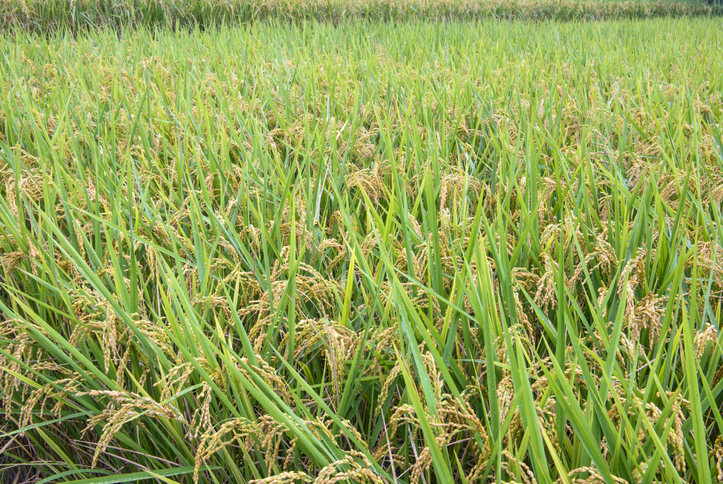
Bacterial Blight Resistant Rice Developed thru Genome Editing
November 6, 2019| |
Genome editing made it possible for the world's most important food crop to become resistant to a destructive bacterial disease.
Xanthomonas oryzae pathovar oryzae (Xoo) causes bacterial blight in rice, a stable food for billions of people worldwide. To combat the devastating infection, Ricardo Oliva and his team at the International Rice Research Institute (IRRI) explored on Xoo genes that encode proteins called transcription-activator-like effectors (TALEs). Xoo use TALEs to switch on SWEET genes in rice plants, which are necessary for disease susceptibility. Thus, when the SWEET genes are expressed, Xoo gets access to the nutrients in the rice plants' leaves.
The researchers analyzed 63 Xoo strains and found that each strain has one or more versions of TALEs. Each version can turn on at lease on of the three SWEET genes. To modify the SWEET genes, the researchers used the genome editing tool CRISPR-Cas9. This led to edited SWEET genes that cannot be activated by the bacterial TALEs. The rice plants with edited genes were found to be resistant to at least 95 Xoo strains.
The findings indicate that genome editing could be an effective tool in enhancing disease resistance of rice, particularly to bacterial blight.
Xoo use these proteins to turn on the plant's SWEET genes, which produce sugar-transporting molecules. This gives the bacteria access to nutrients in the plants' leaves.
Read the research article published in Nature Biotechnology.
| |
You might also like:
- Scientists Discover SWEET Genes to Fight Bacterial Blight
- Pocket K No. 54: Plant Breeding Innovation: CRISPR-Cas9
- Engineering Broad-Spectrum Bacterial Blight Resistance in Rice Using CRISPR-Cas9
Biotech Updates is a weekly newsletter of ISAAA, a not-for-profit organization. It is distributed for free to over 22,000 subscribers worldwide to inform them about the key developments in biosciences, especially in biotechnology. Your support will help us in our mission to feed the world with knowledge. You can help by donating as little as $10.
-
See more articles:
-
News from Around the World
- Golden Rice Hailed As One of PMI's Most Influential Projects of the Last 50 Years
- Pumpkin Genomes Reveal Uncommon Evolutionary History
- Scientists Double Sorghum Grain Yields by 200%
- Researchers Discover ‘KARAPPO' Gene, Reveals How Plants Reproduce through Cloning
- New Book on Science of Communicating Science Published
- EU to Face Economic Disaster if GMO is Banned, Food Safety Commissioner Says
-
Research Highlights
- Increase in Maize Yield Results from Overexpression of Single Gene
- Long-read Sequence Technology Used to Find Genes for Improvement of Watermelon Traits
-
Plant
- CRISPR-Cas9 Used to Alter Anthocyanin Production in Black Rice
- Bacterial Blight Resistant Rice Developed thru Genome Editing
-
Read the latest: - Biotech Updates (December 10, 2025)
- Gene Editing Supplement (December 17, 2025)
- Gene Drive Supplement (February 22, 2023)
-
Subscribe to BU: - Share
- Tweet

